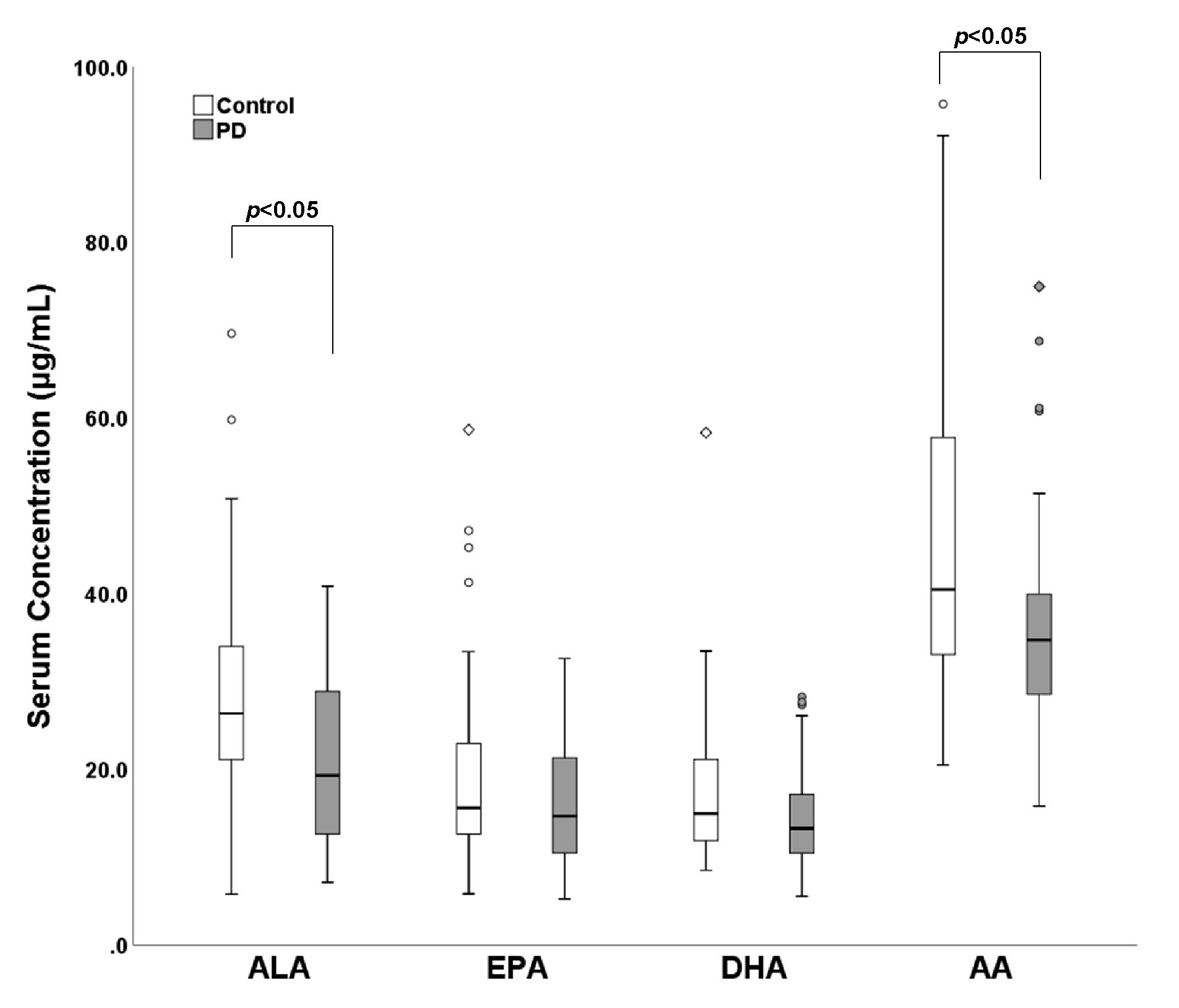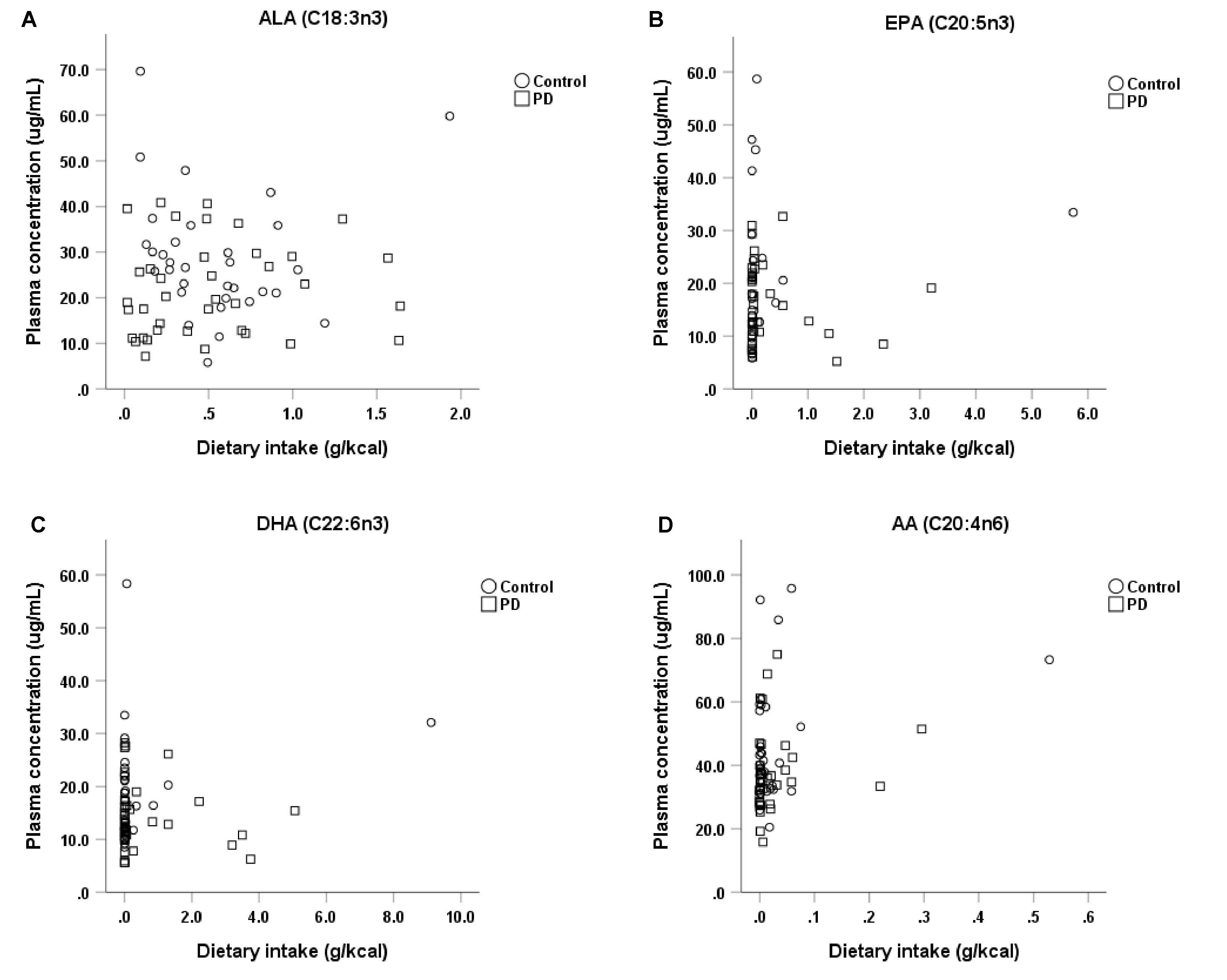Category: Parkinson's Disease: Pathophysiology
Objective: We assessed the dietary intakes and plasma levels of polyunsaturated fatty acid (PUFA) in Parkinson’s disease (PD), and their relation to motor and non-motor symptoms.
Background: Dietary intakes of PUFA are associated with a lower risk of PD and ameliorated clinical symptoms in PD patients. We hypothesized that plasma PUFA levels are attenuated in PD due to impaired absorption.
Method: Plasma levels of PUFA in 38 PD patients were compared with those of 33 healthy volunteers using gas chromatography. We assessed dietary fat intakes based on a validated semi-quantitative food frequency questionnaires and clinical disease severity using the Unified PD rating score.
Results: PD patients had lower plasma levels of alpha-linolenic (p=0.017) and arachidonic (p=0.024) acids compared with control subjects. No differences were found in dietary PUFA intake. The plasma level of alpha-linolenic acids negatively correlated with motor severity scores with marginal significance (Spearman’s rho=-0.318, p=0.052).
Conclusion: These results suggest that pathologic dietary malabsorption or altered metabolic process may influence discrepancy between plasma levels and dietary intakes of PUFA in PD.
To cite this abstract in AMA style:
D. Yoo, Y. Lim, T. Ahn. Dietary and Plasma Polyunsaturated Fatty Acids in Parkinson’s Disease [abstract]. Mov Disord. 2020; 35 (suppl 1). https://www.mdsabstracts.org/abstract/dietary-and-plasma-polyunsaturated-fatty-acids-in-parkinsons-disease/. Accessed December 23, 2025.« Back to MDS Virtual Congress 2020
MDS Abstracts - https://www.mdsabstracts.org/abstract/dietary-and-plasma-polyunsaturated-fatty-acids-in-parkinsons-disease/


